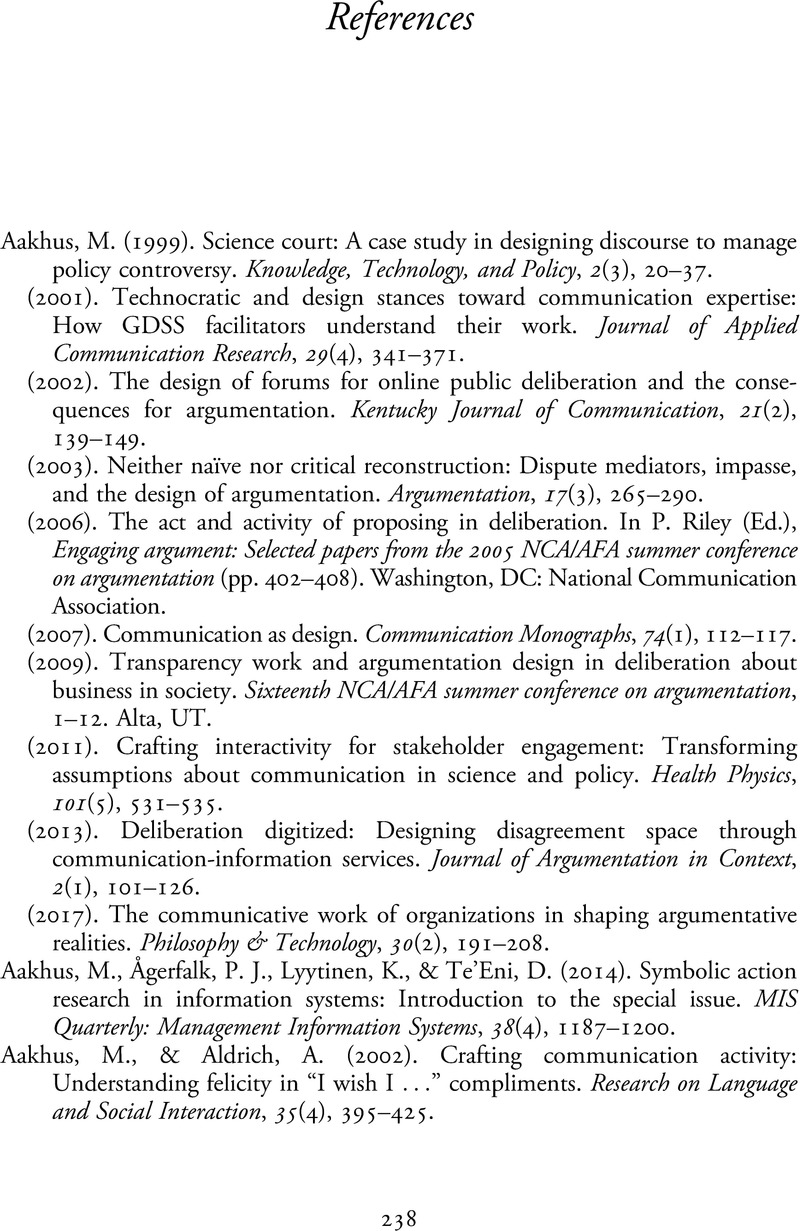References
Published online by Cambridge University Press: 22 February 2023
Summary

- Type
- Chapter
- Information
- Argumentation in Complex CommunicationManaging Disagreement in a Polylogue, pp. 238 - 260Publisher: Cambridge University PressPrint publication year: 2022

